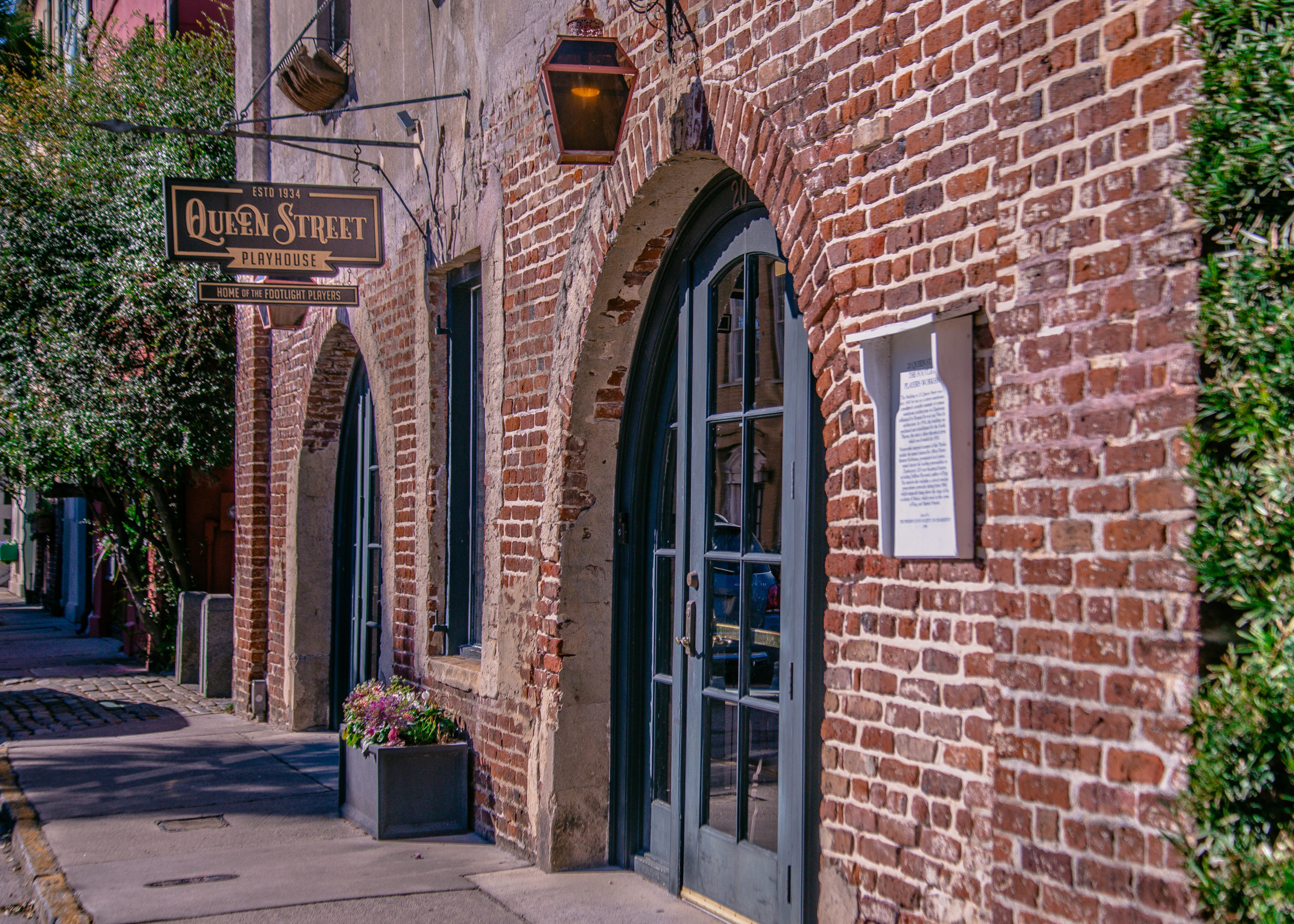Queen Street Playhouse will be added to festival goers routes about town this season as Spoleto adds a new venue to its stable of performance spaces. Located in the heart of Charleston’s historic district, this cozy brick venue boasts the rustic charm and warm acoustics perfect for a jazz quartet or a brand-new production featuring an operatic tenor. Whether you’re attending Spoleto for the first time or have walked past Queen Street Playhouse countless times, here are five hidden secrets about Spoleto’s newest venue.
Queen Street Playhouse was originally built as a cotton warehouse.
Queen Street Playhouse’s unique architecture and building transformation is straight out of the history books. The building was originally constructed in the 1840s as a cotton warehouse. A notable example of vernacular warehouse architecture in Charleston, its style was influenced by Roman Revival and West Indian architecture. Abandoned around the turn of the century, the space was purchased and renovated in the late-1930s by its current theater company, the Footlight Players.
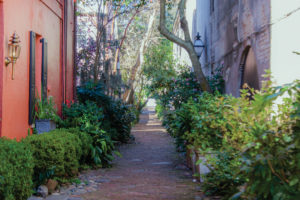
Listen closely and hear the sounds of two dueling spirits.
Running alongside the Playhouse is one of Charleston’s most iconic and photographed downtown scenes: Philadelphia Alley. Yet this narrow pathway is known to have a darker past as a historic dueling site. One of the most infamous duels occurred in October 1786, between Joseph Ladd, a doctor, and his foe Ralph Isaacs. To this day, many actors at Queen Street Playhouse report hearing distant sounds of dueling, accompanied by a faint and spectral whistling.
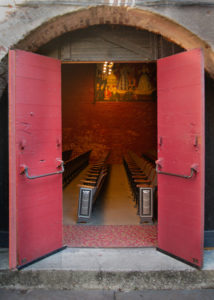
Its major theatrical moment is documented on Queen Street Playhouse’s walls.
Visitors will note the large, sweeping mural painted by Alfred Hutty and Emmett Robinson, depicting significant personalities in Charleston’s 200-year theatrical history—including 12 actors, eight playwrights, two managers, and two critics. Of the most recognizable is American author DuBose Heyward, who wrote the 1925 novel, Porgy, and served on the Footlight Players’ board of directors. Queen Street Playhouse was the site of workshops (preparatory rehearsals and previews) of one of America’s greatest staged musical works: George Gershwin’s Porgy and Bess, for which Heyward served as librettist/lyricist.
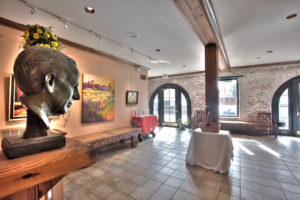
This building is home to a piece of Charleston architecture from another historic (though long-gone) build.
Notice the carved, wooden proscenium cartouche in the lobby? This artifact dates back to 1860, which originally hung above the stage at Charleston’s former Academy of Music (now the site of the Riviera Theatre).
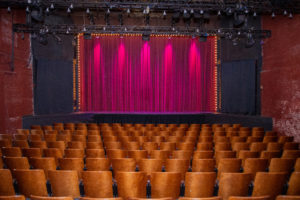
It’s the site of three Spoleto Festival USA firsts:
From May 26 to 30, renowned tenor Jamez McCorkle presents the world premiere of A Poet’s Love, a brand-new staging of Robert Schumann’s Dicterliebe. And later in the Festival, Spoleto’s new Jazz at the Playhouse series mixes the ambiance of this historic theater with the intimacy and excitement of a big-city jazz club—five concert residencies that present cutting-edge improvisers in their element. From June 1 to 3, hear pianist and composer Courtney Bryan—an artist shaping the future of contemporary classical music, who finds the connective tissue between jazz and traditional gospel, spirituals and hymns. Then from June 7 to 10, Immanuel Wilkins, one of the most promising artists of his generation, performs with his acclaimed quartet at Queen Street Playhouse.

